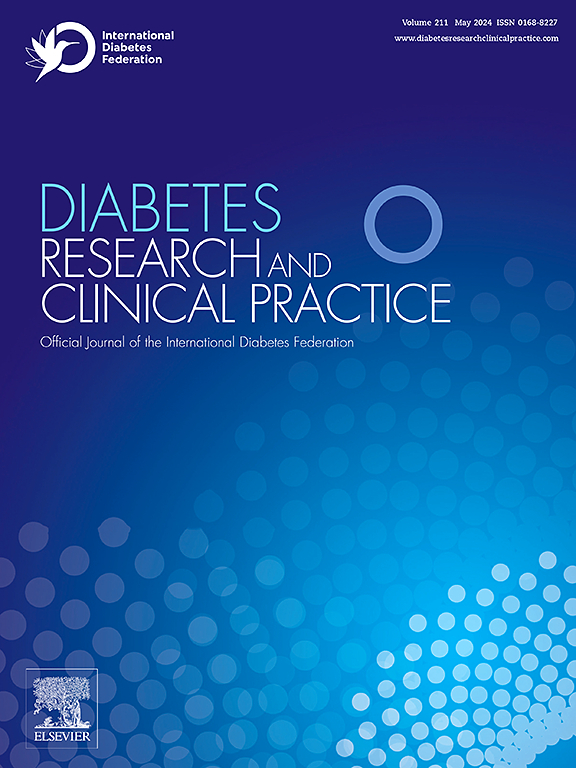Preimplantation genetic testing for type 2 diabetes based on family-specific polygenic risk score: A proof-of-concept study
IF 6.1
3区 医学
Q1 ENDOCRINOLOGY & METABOLISM
引用次数: 0
Abstract
Aims
This study aims to evaluate the feasibility of family-specific polygenic risk prediction in reducing the risk of type 2 diabetes (T2D) in the offspring from an infertile couple with a family history of early-onset T2D.
Methods
We innovatively established a family-specific polygenic risk prediction model for this T2D family and the embryo with the lowest risk of T2D were selected for implantation.
Results
Initially, whole exome sequencing analysis in the family failed to identify monogenic-level pathogenic or likely pathogenic variants responsible for T2D. Thus, preimplantation genetic testing for monogenic disease (PGT-M) may be not applicable. Subsequently, we innovatively developed a family-specific polygenic-level T2D risk prediction model including 114 T2D risk SNPs and weighted by the genotype-phenotype correlation of asymptomatic individuals and T2D patients in the pedigree. Using this model, the euploid embryo P_5977_1C exhibited the lowest T2D risk and was selected for implantation. The newborn displayed the same lowest T2D polygenic risk and normal growth and development after a 16-month follow-up.
Conclusion
Our study provided preliminary evidence for the feasibility of developing a more accurate polygenic risk prediction model using pedigree information and its application in embryo selection.
基于家族特异性多基因风险评分的2型糖尿病植入前基因检测:一项概念验证研究
目的本研究旨在评估家族特异性多基因风险预测在降低具有早发性T2D家族史的不育夫妇后代患2型糖尿病(T2D)风险中的可行性。方法创新性地建立T2D家族特异性多基因风险预测模型,选择T2D风险最低的胚胎进行着床。结果:最初,该家族的全外显子组测序分析未能确定导致T2D的单基因水平致病性或可能致病性变异。因此,单基因疾病的植入前基因检测(PGT-M)可能不适用。随后,我们创新性地建立了包含114个T2D风险snp的家族特异性多基因水平T2D风险预测模型,并通过谱系中无症状个体与T2D患者的基因型-表型相关性进行加权。在该模型下,选择了T2D风险最低的整倍体胚胎P_5977_1C进行着床。经过16个月的随访,新生儿表现出同样最低的T2D多基因风险和正常的生长发育。结论本研究为建立更准确的多基因风险预测模型及其在胚胎选择中的应用提供了初步依据。
本文章由计算机程序翻译,如有差异,请以英文原文为准。
求助全文
约1分钟内获得全文
求助全文
来源期刊

Diabetes research and clinical practice
医学-内分泌学与代谢
CiteScore
10.30
自引率
3.90%
发文量
862
审稿时长
32 days
期刊介绍:
Diabetes Research and Clinical Practice is an international journal for health-care providers and clinically oriented researchers that publishes high-quality original research articles and expert reviews in diabetes and related areas. The role of the journal is to provide a venue for dissemination of knowledge and discussion of topics related to diabetes clinical research and patient care. Topics of focus include translational science, genetics, immunology, nutrition, psychosocial research, epidemiology, prevention, socio-economic research, complications, new treatments, technologies and therapy.
 求助内容:
求助内容: 应助结果提醒方式:
应助结果提醒方式:


